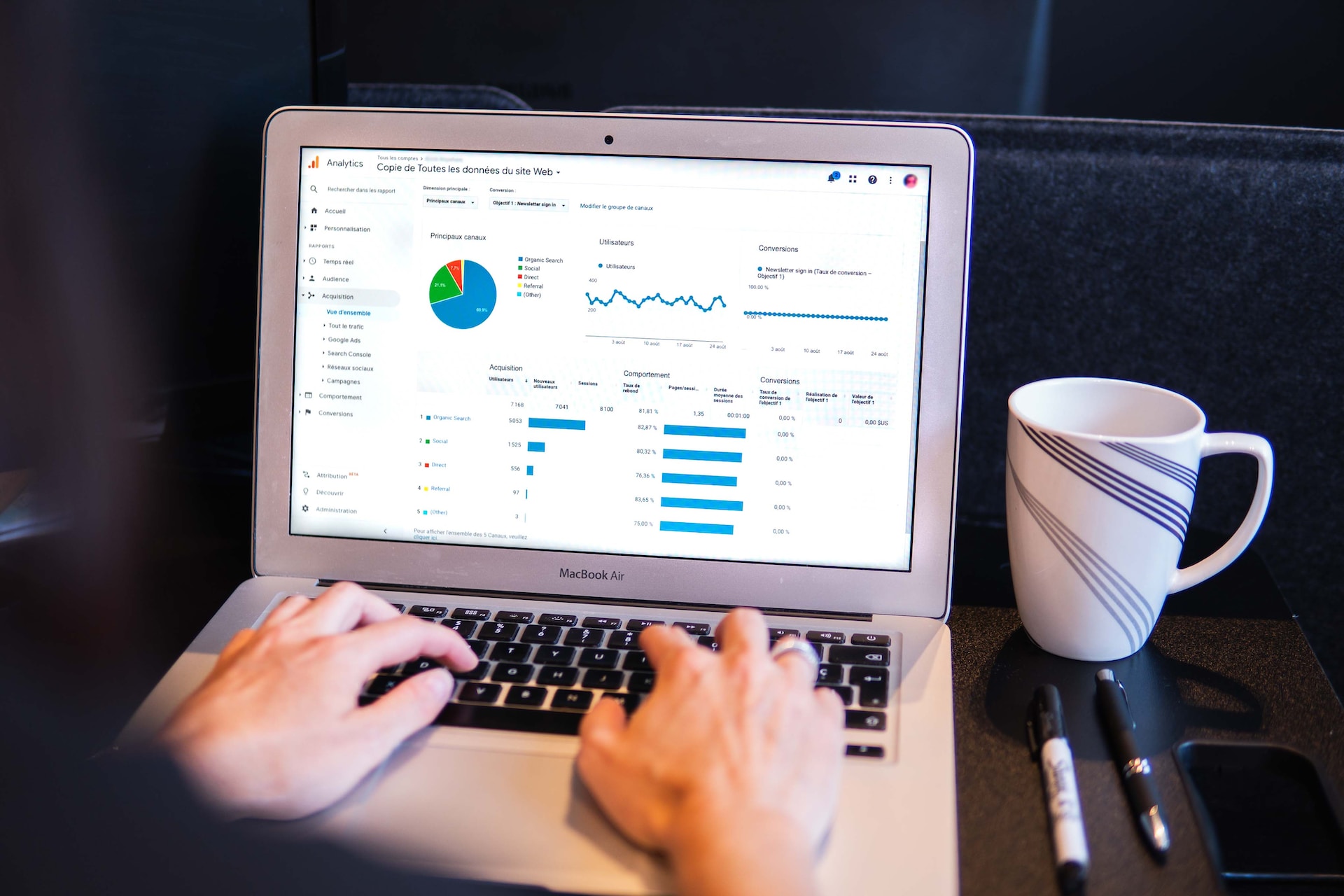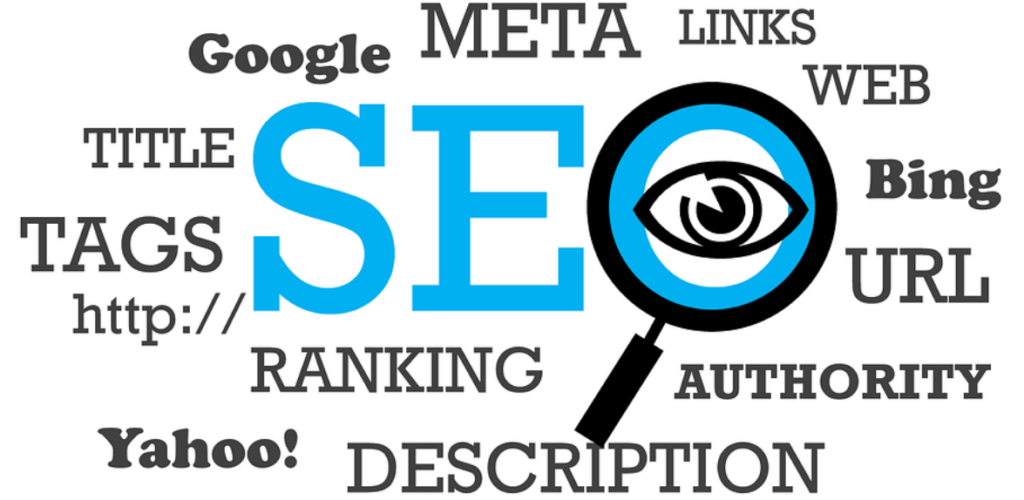
Best Ways to Align an SEO Consultant With Your Digital Marketing GoalsBest Ways to Align an SEO Consultant With Your Digital Marketing Goals
With search engines simply not stopping their algorithm updates while consumer behavior also shifting, having a clear vision is essential. Partnering with an SEO consultant can truly be a great way to pave your way to success if done right. But how do you ensure this collaboration drives real results? By focusing on key areas, such as setting up clear goals and spotting your target audience, you can make your digital marketing campaigns into a seamless operation that resonates across all channels.
This is possible if you partner up with a trustworthy SEO consulting service with years of experience driving results for clients across various industries. However, you’ll learn that you can’t just let the SEO consultant take the reins without aligning them with your digital marketing goals. So, let’s take a closer look at some of the best ways to do just that.
Define Clear Goals
Defining clear goals is the cornerstone of any successful SEO strategy. Without precise objectives, efforts can become scattered and ineffective. Start by identifying what you want to achieve. Are you targeting increased traffic, improved conversions, or enhanced brand visibility? Once your goals are set, make them SMART: Specific, Measurable, Achievable, Relevant, and Time-bound. This framework allows you to track progress effectively and adjust strategies as needed. Communicate these goals with your SEO consultant from the outset. Transparency ensures your team and the SEO consultant are on the same page and working towards a common purpose.

Ensure SEO Supports Broader Campaigns
Integrating SEO with broader digital marketing campaigns is essential for a cohesive strategy. When your SEO efforts align with other channels, such as Instagram and other social media platforms and email marketing, the impact can be powerful. For example, if launching a new product, utilize keyword insights to shape your content across all platforms. This ensures that messaging remains consistent and relevant. Moreover, consider how SEO can enhance paid advertising campaigns. Incorporating high-performing organic keywords into PPC strategies helps improve quality scores and lowers costs per click. At the end of the day, brand visibility relies on synergy between different marketing facets.
Focus on Your Target Audience
Effective SEO is not just about keywords; it’s about knowing who you are trying to reach. That’s why the best way to work with your SEO consultant is to create detailed buyer personas. These profiles should reflect the demographics, interests, and pain points of your ideal customers. This allows for tailored content that resonates deeply with them. Next, analyze user behavior through tools like Google Analytics. Look at how visitors interact with your website. Are they engaging with specific pages? What search terms brought them there? Then, utilize this data to refine your strategies continually. Content should answer their questions and meet their needs.

Leverage Analytics Integration
Analytics integration plays a crucial role in aligning your SEO efforts with digital marketing objectives. By connecting data sources, you gain insights into user behavior and preferences. Utilizing tools like Google Analytics or SEMrush can provide real-time feedback on your website’s performance. This information helps identify which strategies resonate most with your audience. Tracking key metrics, ranging from organic traffic to conversion rates, allows for informed decision-making. You can even adjust campaigns based on what the data reveals about visitor engagement. Not to mention, sharing these analytics with your SEO consultant fosters better collaboration.
How Professional SEO Consultants Can Truly Help
 Now, you may still be wondering if hiring an SEO consultant really helps. Well, professionals in this field can bring a wealth of experience and expertids beyond just keywords and backlinks. A skilled consultant will analyze your current strategy, identify gaps, and create tailored solutions that align with your specific goals.…
Now, you may still be wondering if hiring an SEO consultant really helps. Well, professionals in this field can bring a wealth of experience and expertids beyond just keywords and backlinks. A skilled consultant will analyze your current strategy, identify gaps, and create tailored solutions that align with your specific goals.…










 The first step in franchise marketing is understanding your brand. As a franchisee, you are an extension of the franchisor’s brand, so you must understand the messaging, values, and overall image the franchisor wants to convey. This will help you create marketing materials that align with the franchisor’s branding guidelines and ensure that your marketing efforts are consistent with the rest of the franchise network.
The first step in franchise marketing is understanding your brand. As a franchisee, you are an extension of the franchisor’s brand, so you must understand the messaging, values, and overall image the franchisor wants to convey. This will help you create marketing materials that align with the franchisor’s branding guidelines and ensure that your marketing efforts are consistent with the rest of the franchise network.
 One of the best ways to drive repeat business is by implementing a loyalty program. It can be as simple as a punch card or as complex as a digital rewards program. It can help you increase customer retention and drive revenue. Marketing is a critical component of any business, and it’s no different for franchisees. By understanding your brand, developing a local marketing plan, utilizing digital marketing, leveraging the power of the franchise network, and implementing a loyalty program, you can attract customers and generate revenue for your business.
One of the best ways to drive repeat business is by implementing a loyalty program. It can be as simple as a punch card or as complex as a digital rewards program. It can help you increase customer retention and drive revenue. Marketing is a critical component of any business, and it’s no different for franchisees. By understanding your brand, developing a local marketing plan, utilizing digital marketing, leveraging the power of the franchise network, and implementing a loyalty program, you can attract customers and generate revenue for your business.
 Keyword research is the cornerstone of any successful digital content
Keyword research is the cornerstone of any successful digital content  Overall, blog postings should be 1,000 words long, with 500 words on every page. When possible, use bullet points and bullets; they send strong signals to search engines about the importance you place on that portion of material. As a result, strive to include powerful keywords in these bullets. They also value the user experience by drawing attention to themselves right away.
Overall, blog postings should be 1,000 words long, with 500 words on every page. When possible, use bullet points and bullets; they send strong signals to search engines about the importance you place on that portion of material. As a result, strive to include powerful keywords in these bullets. They also value the user experience by drawing attention to themselves right away.
 Marketing can be expensive as you might need to hire actors, run ads, and do other costly stuff for your promotional campaign. However, the cost of such products is quite affordable and will not hurt your budget very much. It can be an excellent investment as you know that it will bring positive results in return.
Marketing can be expensive as you might need to hire actors, run ads, and do other costly stuff for your promotional campaign. However, the cost of such products is quite affordable and will not hurt your budget very much. It can be an excellent investment as you know that it will bring positive results in return. Most, if not all, businesses that have marketing campaigns regularly have a primary goal of getting their name out there. Promotional products are a great way to accomplish this because it allows you to get your company’s brand in the hands of potential customers.
Most, if not all, businesses that have marketing campaigns regularly have a primary goal of getting their name out there. Promotional products are a great way to accomplish this because it allows you to get your company’s brand in the hands of potential customers. There is more than one reason why having promotional products work for your marketing campaign. Promotional items act as a great way to make sure customers remember you and what you do, making them more likely to come back when they need something like the product or service that you offer.
There is more than one reason why having promotional products work for your marketing campaign. Promotional items act as a great way to make sure customers remember you and what you do, making them more likely to come back when they need something like the product or service that you offer.
 The critical breakthrough with online marketing agencies is creating direct communication between a business and customers. Their communication channels work in real-time with complete authenticity.
The critical breakthrough with online marketing agencies is creating direct communication between a business and customers. Their communication channels work in real-time with complete authenticity. Tools help digital marketers gain vital insights on customers, online visibility, and overall performance. When you pick a tool that monitors
Tools help digital marketers gain vital insights on customers, online visibility, and overall performance. When you pick a tool that monitors 
 Before you start looking for an
Before you start looking for an  After you have indicated your business goals, the next step is to conduct thorough research. Spare some of your time and money to gather all the relevant information to guide you in this process. Note that you need to look into tons of data on various sites before making any decision. When you are hiring an SEO agency for your website, you need to understand that each industry has unique modules that can suit your unique and different expectations. With thorough research, you will know other elements you should consider in this process.
After you have indicated your business goals, the next step is to conduct thorough research. Spare some of your time and money to gather all the relevant information to guide you in this process. Note that you need to look into tons of data on various sites before making any decision. When you are hiring an SEO agency for your website, you need to understand that each industry has unique modules that can suit your unique and different expectations. With thorough research, you will know other elements you should consider in this process.
 With increased traffic to your website, you already know that your SEO is doing something. There are some procedures that digital marketing experts do to help you rank on top of search engines. By helping your website gain more traffic, the click-through rate is increased, bringing you to the top of search engines.
With increased traffic to your website, you already know that your SEO is doing something. There are some procedures that digital marketing experts do to help you rank on top of search engines. By helping your website gain more traffic, the click-through rate is increased, bringing you to the top of search engines. An engaging and informative website also decreases the bounce rate. The bounce rate is the number of times that visitors leave your website without finishing all the pages and the returns to look again for some details. You will know that your
An engaging and informative website also decreases the bounce rate. The bounce rate is the number of times that visitors leave your website without finishing all the pages and the returns to look again for some details. You will know that your 


 Your SEO attempts will be useless if your business site is not user-friendly. And this aspect is profoundly affected by the design of the web. Therefore, if you already have a website now, conduct an audit on it. But if you have zero knowledge on that matter, don’t think twice to hire a web developer to do the job.
Your SEO attempts will be useless if your business site is not user-friendly. And this aspect is profoundly affected by the design of the web. Therefore, if you already have a website now, conduct an audit on it. But if you have zero knowledge on that matter, don’t think twice to hire a web developer to do the job.  Among all platforms,
Among all platforms, 
 When it comes to such serious matters, your business will only come out alive when you get your facts right. Thanks to all the sources close by, all your SEO needs are taken care of.
When it comes to such serious matters, your business will only come out alive when you get your facts right. Thanks to all the sources close by, all your SEO needs are taken care of.
 While you are conducting your research, ensure that you look at the services you expect from these agencies. By spending most of your time researching, be assured that you will get to understand what you will receive from these agencies.
While you are conducting your research, ensure that you look at the services you expect from these agencies. By spending most of your time researching, be assured that you will get to understand what you will receive from these agencies.
 methods where you can spend a lot on posters, printing shirts and even paying some of your marketers. All you have to do in social media marketing is create accounts and start pushing some of your items. Using this method will help you save a lot of money.
methods where you can spend a lot on posters, printing shirts and even paying some of your marketers. All you have to do in social media marketing is create accounts and start pushing some of your items. Using this method will help you save a lot of money. You will see them flock to your shop within a short period. Some of them can even tell their friends or share your posts to make many aware of your business.…
You will see them flock to your shop within a short period. Some of them can even tell their friends or share your posts to make many aware of your business.…
 It is essential to make sure that the company you choose has a solid reputation. Take time to go through the profile of the company and check the projects they have been working on before. You can ask the company for their referrals. Talk to the contacts given and ask about their experience with the company. Ask them if they were satisfied with the services and if they can recommend anyone to work with them.
It is essential to make sure that the company you choose has a solid reputation. Take time to go through the profile of the company and check the projects they have been working on before. You can ask the company for their referrals. Talk to the contacts given and ask about their experience with the company. Ask them if they were satisfied with the services and if they can recommend anyone to work with them. If you do not have an idea about SEO services, talk to your friends and family for help about the same. You can as well, hire SEO savvy influencer to guide you to the best SEO firms in the area. You better seek help and recommendations than working with the cheapest company and losing your money.
If you do not have an idea about SEO services, talk to your friends and family for help about the same. You can as well, hire SEO savvy influencer to guide you to the best SEO firms in the area. You better seek help and recommendations than working with the cheapest company and losing your money.
 Before you start the search of an
Before you start the search of an  You should understand the optimization technique which will be used by the company. Many companies use the white hat techniques to optimize websites, but some use the grey or black hat technique. You should spend time with optimization companies to understand the techniques used on your site. Stay away from companies which use unapproved techniques like black and grey hat methods.
You should understand the optimization technique which will be used by the company. Many companies use the white hat techniques to optimize websites, but some use the grey or black hat technique. You should spend time with optimization companies to understand the techniques used on your site. Stay away from companies which use unapproved techniques like black and grey hat methods.